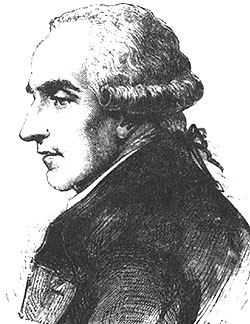The directory «Plots of stamps in the catalogue»
Laplace Pierre Simon
(1749—1827)

French physicist and mathematician who put the final capstone on mathematical astronomy by summarizing and extending the work of his predecessors in his five volume Mécanique Céleste (Celestial Mechanics) (1799-1825). This work was important because it translated the geometrical study of mechanics used by Newton to one based on calculus, known as physical mechanics. In Mécanique Céleste, Laplace proved the dynamical stability of the solar system (with tidal friction ignored) on short time scales. On long time scales, however, this assertion was proven false in the early 1990s. Laplace solved the libration of the Moon. In this work, he frequently omitted derivations, leaving only results with the remark "il est aisé à voia" (it is easy to see). It is said that he himself could not always fill in the derivations later without days of work. For a revealing quote, see the remark made by Laplace's translator Bowditch. After reading Mécanique céleste, Napoleon is said to have questioned Laplace on his neglect to mention God. In stark contrast to Newton's view on the subject, Laplace replied that he had no need for that hypothesis.
Laplace also systematized and elaborated probability theory in "Essai Philosophique sur les Probabilités" (Philosophical Essay on Probability, 1814). He was the first to publish the value of the Gaussian integral, . He studied the Laplace transform, although Heaviside developed the techniques fully. He proposed that the solar system had formed from a rotating solar nebula with rings breaking off and forming the planets. He discussed this theory in Exposition de système du monde (1796). He pointed out that sound travels adiabatically, accounting for Newton's too small value. Laplace formulated the mathematical theory of interparticulate forces which could be applied to mechanical, thermal, and optical phenomena. This theory was replaced in the 1820s, but its emphasis on a unified physical view was important. With Lavoisier, whose caloric theory he subscribed to, he determined specific heats for many substances using a calorimeter of his own design. Laplace borrowed the potential concept from Lagrange, but brought it to new heights. He invented gravitational potential and showed it obeyed Laplace's equation in empty space. After being appointed Minister of the Interior by Napoleon, Laplace was dismissed with the comment that "he carried the spirit of the infinitely small into the management of affairs".
France, 1955, Laplace
Guinea, 2008, Pierre-Simon Laplace
France, 1955.06.11,  Beaumont. Laplace
Beaumont. Laplace